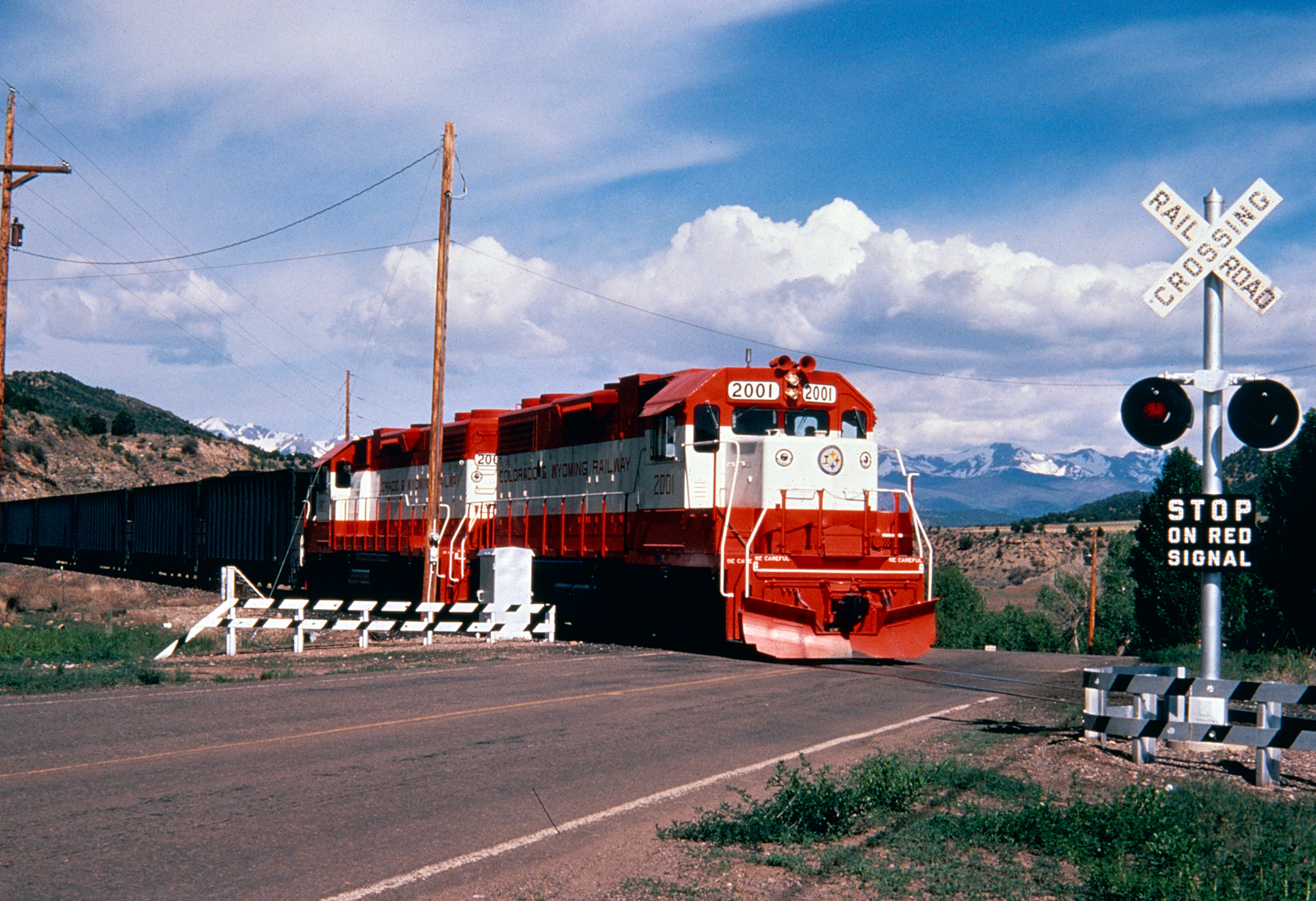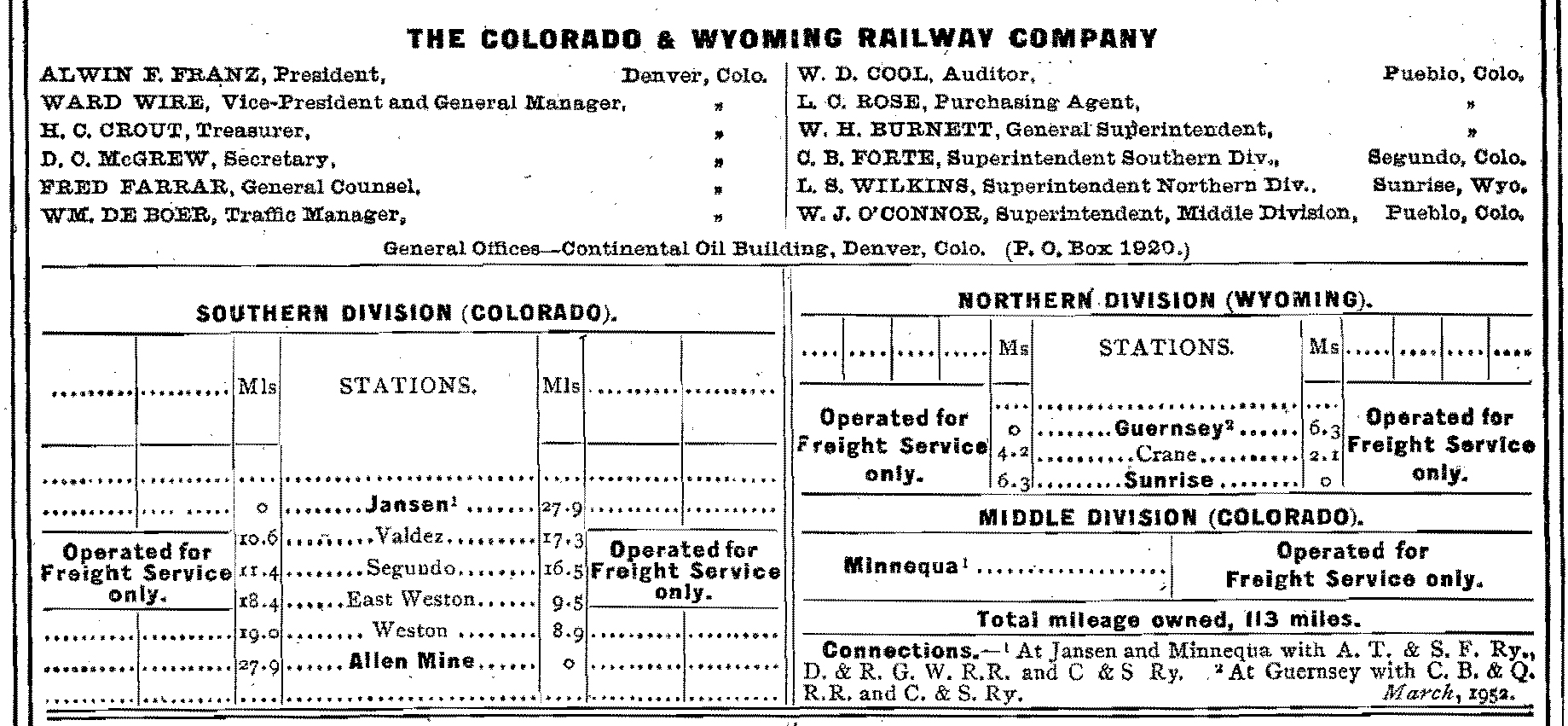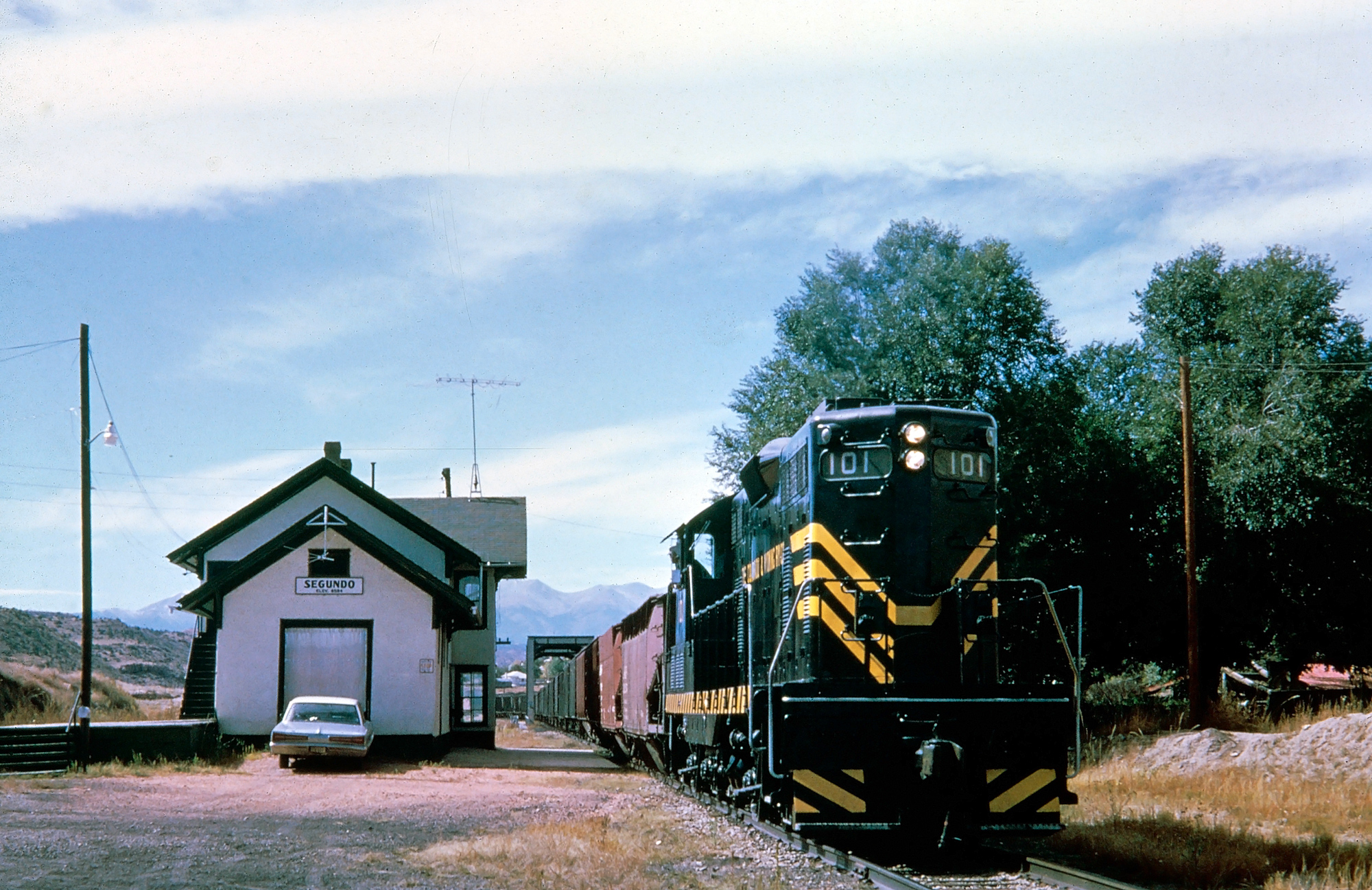Colorado and Wyoming Railway: Roster, History, Photos
Last revised: September 2, 2024
By: Adam Burns
The history of the Colorado and Wyoming Railway (C&W) may not be as widely known as some of the more prominent railroads in the United States, but its story is nonetheless fascinating and significant to the development of the American West.
Emerging during a transformative period in the late 19th and early 20th centuries, the C&W served as a critical infrastructure for industries and communities in Colorado and Wyoming.
At its peak, the C&W operated three divisions; the 28-mile "Southern Division" (Colorado), "Middle Division" (Colorado), and short 6.3-mile "Northern Division" (Wyoming). Its network, in all, once totaled 116 miles.
In this original form the railroad was a subsidiary of the Colorado Fuel & Iron Company to transport iron ore and coal to the steel mill at Pueblo. In 1993 the system was sold to Oregon Steel Mills.
Today, the C&W is subsidiary of Evraz North America and continues to move these products and serve the former CF&I's Minnequa plant in Pueblo.
This railroad interchanges with the Union Pacific Railroad and the BNSF Railway, facilitating extensive distribution networks. This article will delve into the key moments, developments, and impacts of this essential railway.
 Colorado & Wyoming GP38-2's #2001 and #2002 cross Highway 12 in Weston, Colorado with eastbound loads of coal in the summer of 1974. American-Rails.com collection.
Colorado & Wyoming GP38-2's #2001 and #2002 cross Highway 12 in Weston, Colorado with eastbound loads of coal in the summer of 1974. American-Rails.com collection.Origins and Construction
The Colorado and Wyoming Railway was incorporated on November 18, 1899. The primary motivation for its creation was to support the CF&I's burgeoning mining and steel industries in the region. At the time, steel production was heavily dependent on iron ore, coal, and limestone—resources abundantly found in Colorado and Wyoming.
The construction of the railway was driven by the need to connect these resource-rich areas with factories and smelters.
Completing the first section of the railway in 1901, it spanned from Sunrise in Wyoming to the Colorado Fuel and Iron Company's (CF&I) vast steelworks in Pueblo, Colorado.
This connection was crucial in enabling the efficient transportation of raw materials, thereby boosting the iron and steel industries, which were vital to the country's industrialization efforts.
Industrial Backbone
The Colorado Fuel and Iron Company played a pivotal role in the establishment and operations of the C&W. CF&I was one of the largest steel producers in the United States at the time, and it depended heavily on the resources transported by the railway.
The C&W did not only transport raw materials but also facilitated the movement of finished steel products to markets, suppliers, and customers. It also operated passenger service until the mid-20th century - a requirement of a common-carrier system.
One of the standout aspects of the C&W was its role in transporting coal. The Colorado and Wyoming region is rich in coal deposits that were essential for powering steel mills and generating electricity. The railway's efficient movement of coal allowed CF&I to maintain a steady production rate, further solidifying the company's position in the industry.
Expansion and Development
Throughout the early 20th century, the Colorado and Wyoming Railway expanded its reach. The construction of additional branches connected several key mining towns and industrial centers.
By the 1920s, the C&W Railway had become deeply embedded in the regional economy. It wasn't just a transportation route; it was a lifeline that supported local employment, bolstered industries, and contributed to the economic growth of Colorado and Wyoming.
Official Guide Listing (1952)

Challenges and Adaptations
The Great Depression of the 1930s posed significant challenges for many industries, including the railway sector. The Colorado and Wyoming was no exception, facing financial difficulties and declining demand for steel, coal, and other raw materials.
However, the company managed to weather the storm by streamlining operations, increasing efficiency, and maintaining critical transportation links. World War II brought renewed demand for steel, as the United States ramped up production for the war effort.
The C&W played a vital role during this period, ensuring that raw materials reached factories quickly and efficiently. The increased demand led to temporary surges in employment and activity along the railway lines.
Post-War Era and Modernization
Following World War II, the Colorado and Wyoming faced a new set of challenges and opportunities. The post-war era was marked by technological advancements in transportation, including the rise of trucks and automobiles. Despite this, railways continued to play a crucial role in heavy industry transport.
The 1950s and 1960s saw efforts to modernize the C&W. This included upgrading tracks, investing in new locomotives, and enhancing infrastructure to remain competitive in an evolving transportation landscape. These modernization efforts were essential in retaining the railway's relevance as industries began to shift and diversify.
Decline and Transition
By the latter half of the 20th century, the dominance of railways began to wane. The rise of interstate highways, improvements in trucking logistics, and changing industrial patterns led to a gradual decline in railway usage. The C&W faced increasing competition from other modes of transport, causing a reduction in some of its operations.
In 1974, the last portion of the mainline between Sunrise and Minnequa was abandoned, reflecting the waning demand for heavy rail transport. However, the C&W didn't disappear entirely. Instead, it transitioned towards specialized services and niche markets, focusing on areas where rail transport remained essential.
Heritage and Legacy
While the Colorado and Wyoming no longer operates on the same scale as it did during its peak, it leaves behind a rich legacy. The railway played a critical role in shaping the economic and industrial landscapes of Colorado and Wyoming. Its contributions to the steel and coal industries cannot be overstated, providing the necessary infrastructure for industrial growth in the region.
The remnants of the C&W, such as old tracks, stations, and infrastructure, now stand as historical landmarks and reminders of a bygone era. They symbolize the ingenuity and determination of those who built and operated these essential transport routes.
Diesel Roster (All-Time)
| Road Number | Model Type | Builder | Date Built | Serial Number | Disposition |
|---|---|---|---|---|---|
| 101 | GP7 | EMD | 3/1951 | 13351 | Repainted and renumbered 200 for the Bicentennial in 1975. Sold to the Sidney & Lowe Railroad. |
| 102 | GP7 | EMD | 3/1951 | 13352 | Donated to the Pueblo Railway Museum |
| 103 | GP7 | EMD | 12/1951 | 15746 | Donated to the Pueblo Railway Museum. |
| 104 | GP7 | EMD | 12/1951 | 15747 | Donated to the Pueblo Railway Museum. |
| 201-209 | SW8 | EMD | 12/1951 | 15737-15745 | - |
| 210-212 | SW8 | EMD | 3/1952 | 15940-15942 | #210 sold. |
| 214 | SW900 | EMD | 5/1957 | 23537 | Sold |
| 1104 | S2 | Alco | 3/1944 | 70196 | Built as Rio Grande #116. Scrapped in the late 1970s. |
| 1105 | S2 | Alco | 9/1943 | 70183 | Built as Rio Grande #109. Scrapped in the 1970s. |
| 1106 | VO1000 | Baldwin | 7/1942 | 64413 | Built as US Army #7454. Scrapped in the 1970s. |
| 1107-1108 | VO1000 | Baldwin | 9/1943 | 69654-69655 | Sold |
| 1109 | VO1000 | Baldwin | 12/1943 | 70116 | Sold |
| 2001-2002 | GP38-2 | EMD | 11/1973 | 73632-1, 73632-2 | Sold |
 Colorado & Wyoming GP7 #101 has a string of coal hoppers at the small depot in rural Segundo, Colorado, circa 1975. American-Rails.com collection.
Colorado & Wyoming GP7 #101 has a string of coal hoppers at the small depot in rural Segundo, Colorado, circa 1975. American-Rails.com collection.Conclusion
The history of the Colorado and Wyoming Railway is a testament to the pivotal role railroads played in the industrialization and development of the American West. From its origins in the late 19th century to its contributions during key historical moments like World War II, the C&W supported vital industries and communities across Colorado and Wyoming.
Although it has transitioned from its former prominence, the legacy of the Colorado and Wyoming Railway endures. Its impact continues to be felt in the region's economy, infrastructure, and history, reflecting the enduring importance of rail transport in the broader narrative of American progress and development.
Recent Articles
-
New Mexico Railroad Museums: A Complete Guide
Apr 23, 25 02:25 PM
The enchanting state of New Mexico, known for its vivid landscapes and rich cultural heritage, is home to a number of fascinating railroad museums. -
New Hampshire Railroad Museums: A Complete Guide
Apr 23, 25 02:11 PM
New Hampshire, known for its breathtaking landscapes, historic towns, and vibrant culture, also boasts a rich railroad history that has been meticulously preserved and celebrated across various museum… -
Minnesota Railroad Museums: A Complete Guide
Apr 22, 25 12:17 PM
The state of Minnesota has always played an important role with the railroad industry, from major cities to agriculture. Today, several museums can be found throughout the state.